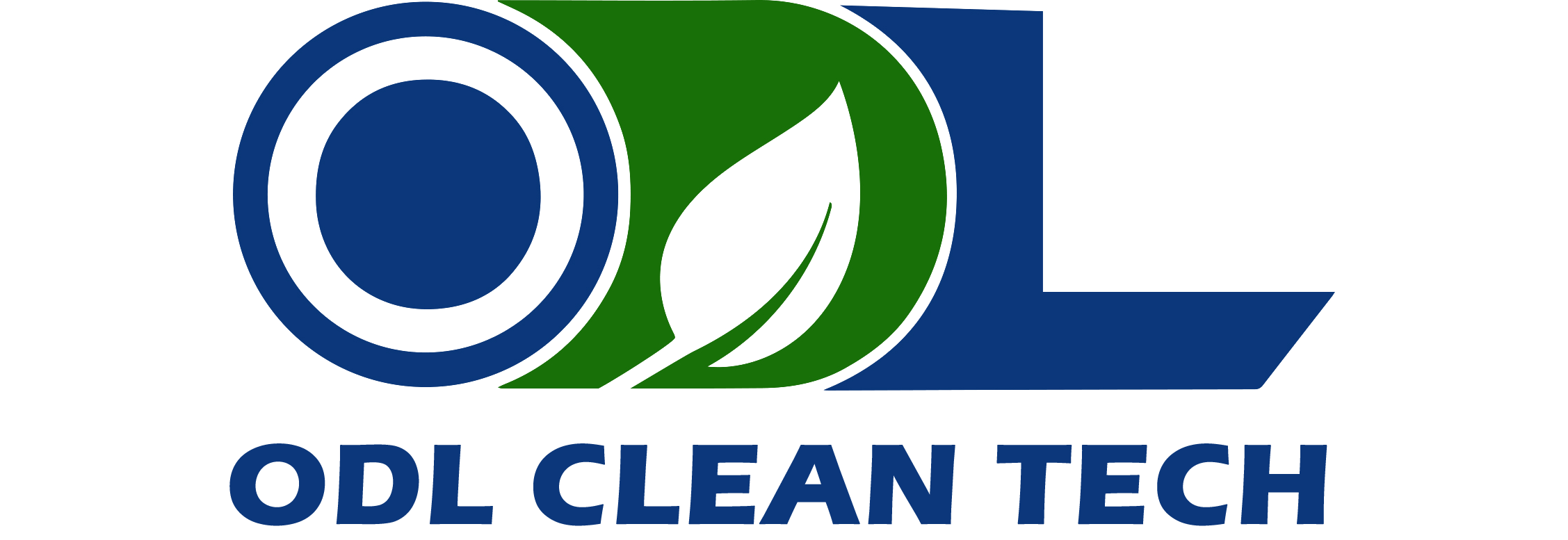The manufacturing of Liquid Crystal Display (LCD) panels and Flat Panel Displays (FPDs) demands exceptionally controlled environments. Particles, temperature fluctuations, or static discharge directly cause fatal defects, severely impacting yield. This project outline details the planning and execution for an FPD production facility that actively manages environmental variables to meet the highest quality standards.
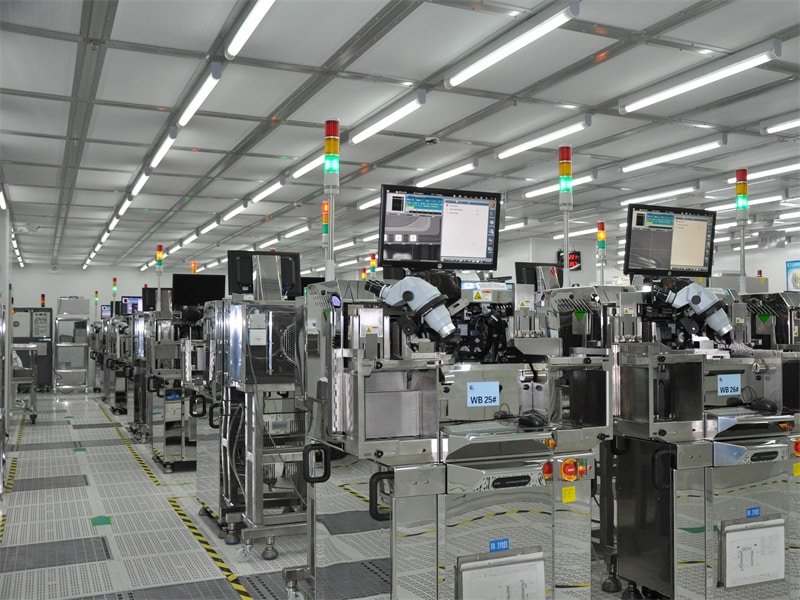
Project Overview
Project Name: LCD Panel (FPD) Class 100 Clean Room Facility
Project Area: 5,500 square meters
Services: We deliver complete planning, design, engineering, construction, and certification for cutting-edge electronic clean room facilities.
Design Concept: We prioritize maximum yield, operational flexibility, and energy efficiency. The design integrates current production needs with planned future expansion, ensuring long-term utility.
Functional Areas: The layout includes distinct zones for Array Process (Thin Film Transistor deposition and etching), Cell Assembly, Module Assembly (LCM), Substrate Washing and Storage, Chemical Supply Rooms, Air Shower Tunnels, Material Pass Boxes, and associated operational and administrative spaces.
Intelligent Management: The facility incorporates a comprehensive Building Management System (BMS) that actively controls HVAC, differential pressure, and utilities. We integrate this with a sophisticated real-time Particle Monitoring System (PMS) and inventory tracking systems.
Environmental Protection Measures: The design implements a closed-loop system for solvent recovery and a high-efficiency wastewater treatment plant, ensuring the facility meets and exceeds all local and international environmental protection regulations.
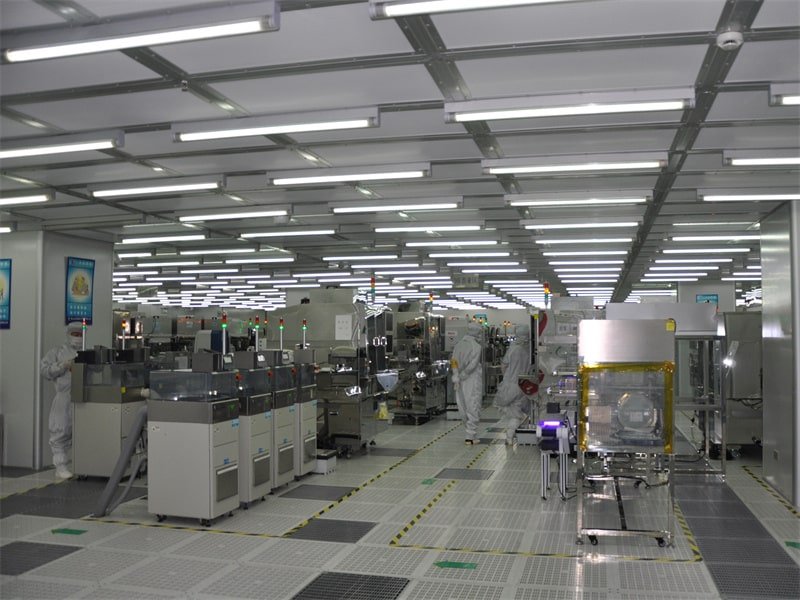
Design Proposal
Layout and Flow Management
Designers prioritize the unidirectional flow of large glass substrates through the Array and Cell processes.
- We establish separate channels for human entry/exit and material logistics (glass carriers and chemicals), eliminating potential cross-contamination pathways.
- The production layout ensures minimum travel distance for the large, fragile substrates, minimizing risk.
- We plan equipment placement to allow ample maintenance access and reserve critical space for future generation equipment upgrades.
- Buffer rooms or airlocks actively transition personnel and materials between areas with differing cleanliness classifications, strictly regulating air movement.
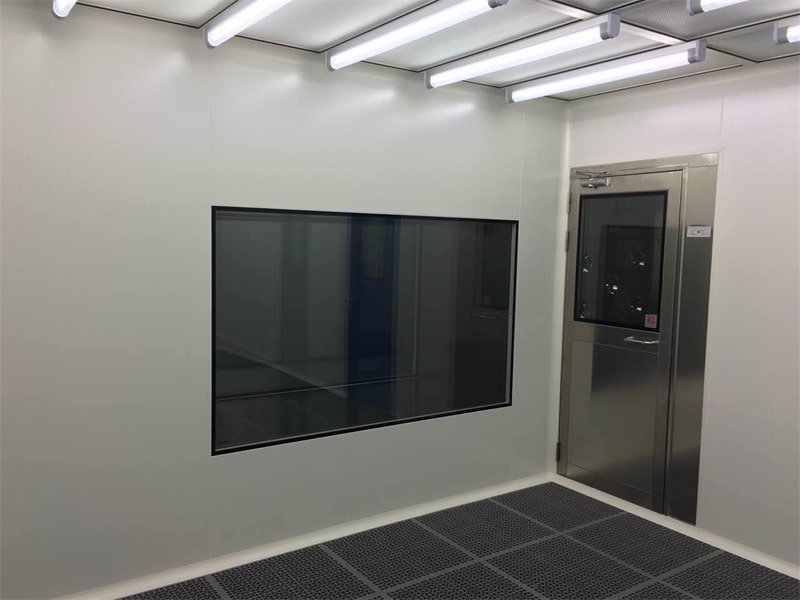
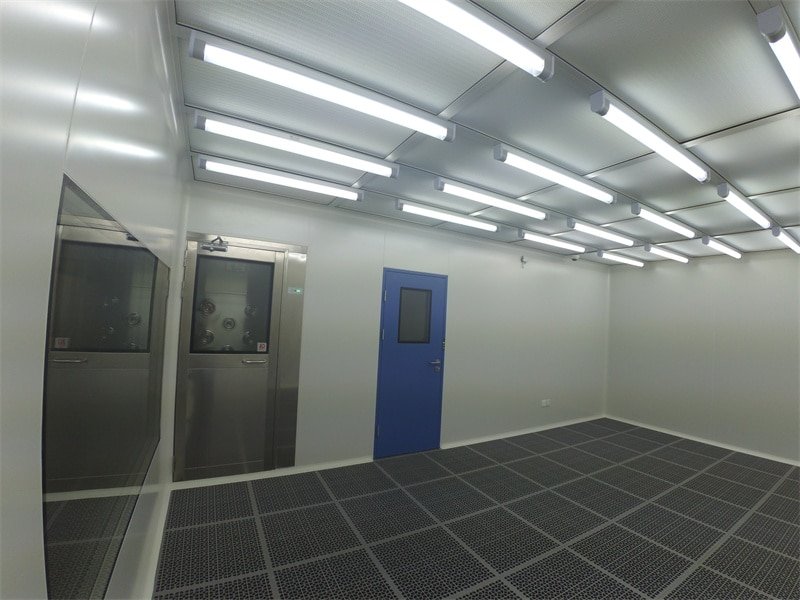
Cleanliness Level Strategy
The clean room structure employs a tiered cleanliness strategy to optimize construction and operational costs.
- The Array Process areas (e.g., photolithography, deposition) maintain the ultra-pure Class 100 (ISO 5) level.
- The Cell and Module Assembly (LCM) areas achieve Class 1,000 to Class 10,000 (ISO 6 to ISO 7) purity, depending on the specific operation.
- We implement vertical laminar airflow (top-down) in all Class 100 areas to effectively sweep particles away from the critical work zone.
- The system employs Fan Filter Units (FFUs), fitted with ULPA (Ultra Low Penetration Air) filters, directly above critical machinery, guaranteeing the required air purity.
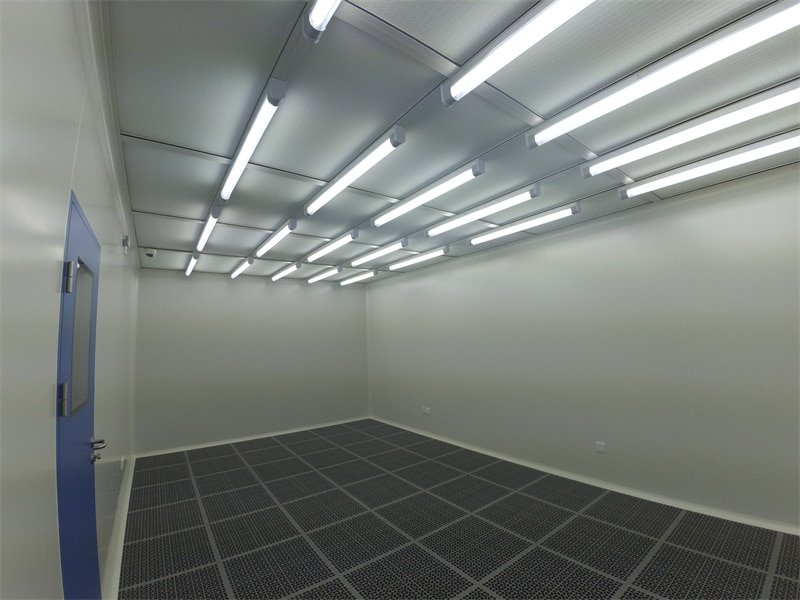
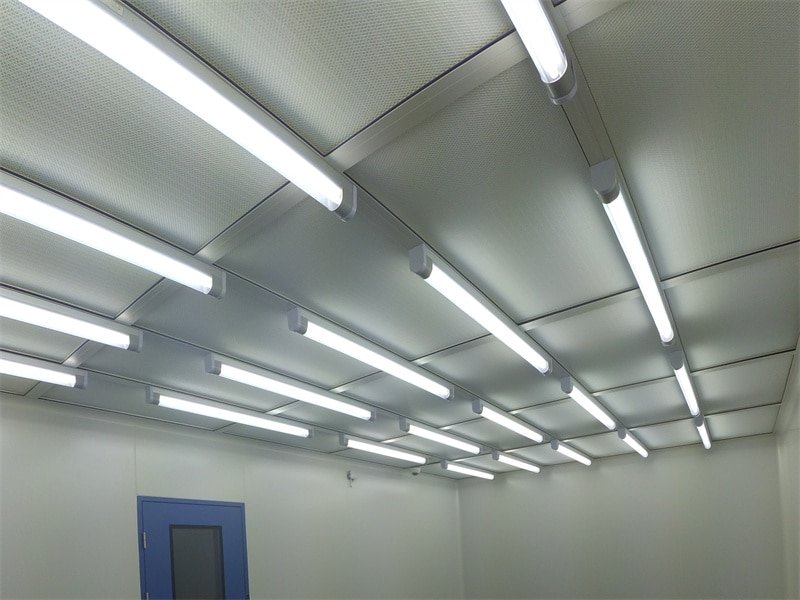
Air Conditioning and Filtration System
The HVAC system executes precise control over air quality and thermal conditions.
- We specify dedicated Air Handling Units (AHUs) for each major clean zone, enabling independent control of temperature, humidity, and pressure stability.
- The fresh air intake system uses three stages of filtration—pre-filter, medium-efficiency, and high-efficiency—to establish the base level of air cleanliness.
- The system actively manages the exhaust of process gases and high heat load from specialized manufacturing equipment, ensuring immediate removal.
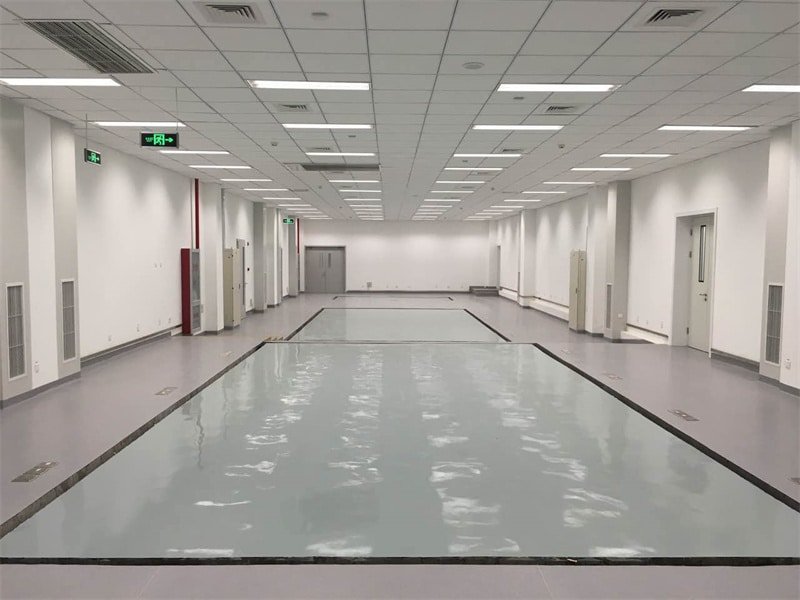
Environmental Control (Temperature, Humidity, and Pressure)
We implement extremely tight tolerances for environmental variables, which are critical for precision coating and etching.
- Engineers install constant temperature and humidity (CTH) air conditioning systems to hold the workshop environment stable within ±0.5°C and ±2% relative humidity (RH).
- We maintain a positive pressure differential of at least 10 Pa between clean zones and adjacent less-clean or non-clean areas, stopping the backflow of contaminated air.
Lighting and Static Control
Display manufacturing is highly sensitive to light contamination and static discharge.
- The photolithography zones require specialized yellow lighting systems that emit no light below 500 nanometers, preventing the exposure of photoresist materials.
- We use integrated clean room light fixtures throughout, designing the layout to provide uniform illumination without glare or shadows, supporting intricate visual inspection tasks.
- We install ionizing air guns and bars at critical work points to actively neutralize static charges.
- Anti-static epoxy flooring safely dissipates any remaining static electricity.
- All personnel wear grounding straps and specialized anti-static garments that further mitigate charge buildup.
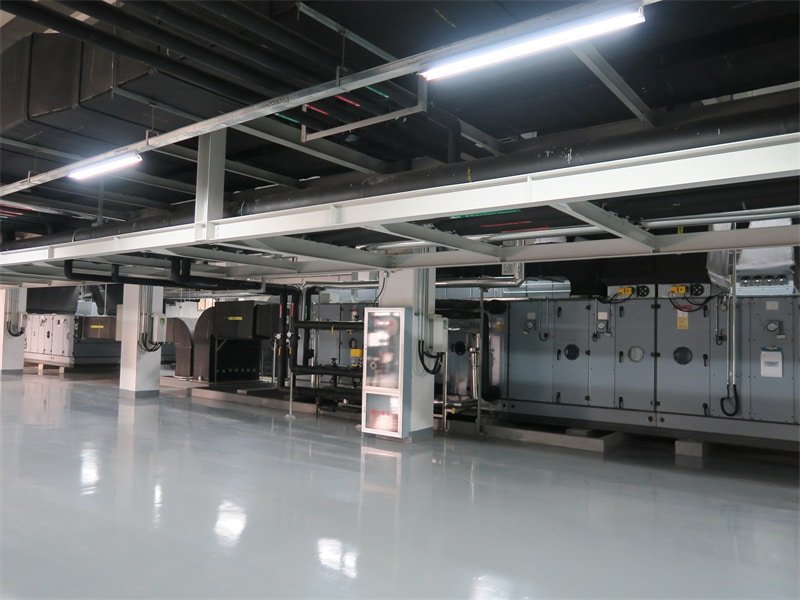
Operational Details and Assurance
Personnel and Material Transfer
We strictly manage entry and internal transfer to uphold the environmental integrity.
- Air Shower Tunnels utilize high-velocity air jets to actively remove particles from personnel prior to entering the production zone.
- Pass Boxes securely transfer materials between clean and non-clean zones, minimizing human traffic and maintaining differential pressure stability.
Quality Monitoring and Assurance
Continuous data collection drives process control and quality assurance.
- A dedicated monitoring system tracks and logs data in real-time for critical parameters including particle counts (at 0.1, 0.3, and 0.5 µm), temperature, humidity, and differential pressure.
- The construction team adheres strictly to ISO 14644 standards throughout the building phase.
- Upon completion, independent specialists validate and certify the clean room, performing comprehensive tests on airflow uniformity, filter integrity, and environmental stability before we transfer the facility to the client.
- We provide a detailed maintenance schedule for all HVAC and filtration components, ensuring the client upholds the designed purity levels over the facility’s lifespan.
